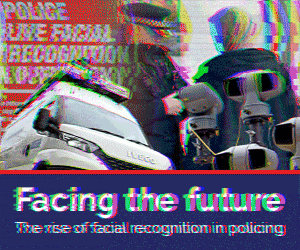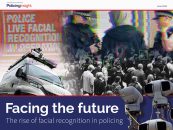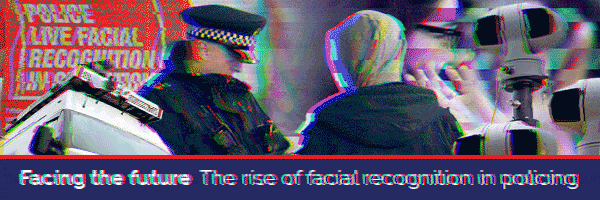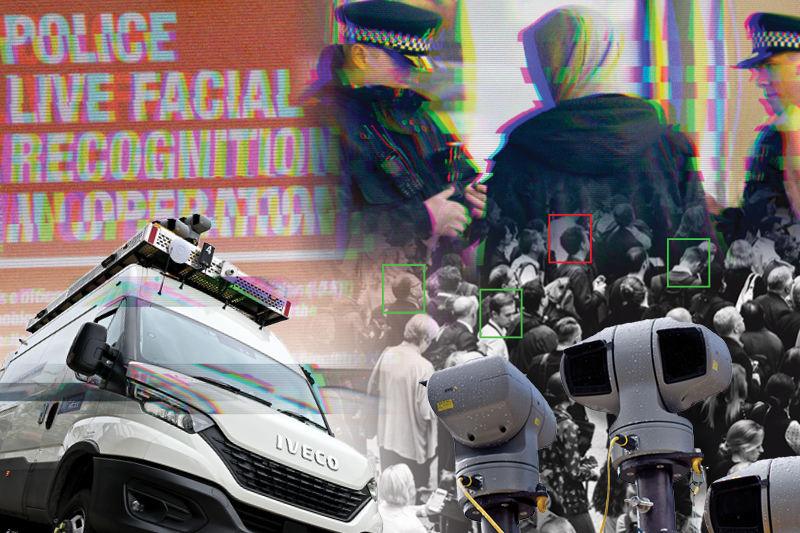Facial recognition is hailed by advocates as the biggest policing advance since DNA, but by opponents as dangerous and intrusive technology; a new report by Policing Insight – Facing the future: the rise of facial recognition in policing – examines all sides of the argument, with input from police leaders, academics, legal experts, campaign groups and suppliers from across the UK as well as Europe, Australasia and North America, to give you all the information you need on one of today’s most complex police technology debates.
The debate about police use of facial recognition (FR) often proves highly divisive.
On one side, the UK Policing Minister Chris Philp (at the time of writing) told Policing Insight earlier this year that FR could “transform policing and dramatically increase the number of criminals that get caught”.
Similarly, Lindsey Chiswick, the Metropolitan Police Director of Intelligence and National Police Chiefs’ Council (NPCC) Lead for FR has claimed that it is the “biggest development in policing since DNA or fingerprints”.
For others – such as high-profile campaign group Big Brother Watch – it is a dangerous technology that undermines our fundamental freedoms, especially in the hands of law enforcement.
In reality, police use of FR is simultaneously exaggerated and undervalued. It’s true that live facial recognition (LFR) – FR used for surveillance purposes – remains relatively rare across the Western world.
Even in England and Wales, which is generally considered a global leader in police FR, its use is limited. The Met (one of the two forces using it regularly) has just two LFR vans it can deploy at any one time. And in many countries, interest in LFR appears very limited; New Zealand offers one good example of this.
And yet, LFR is no longer merely being used on a trial basis. South Wales Police has deployed it 115 times since 2017. The Met has deployed LFR 105 times since 2020 alone; its systems have seen approximately 1.28 million faces in that time, leading to 561 arrests or other disposals. In 2023 and 2024, the force deployed LFR for 30,620 minutes (over 500 hours) on the streets of London.
And in many countries – such as England and Wales, Sweden and Ireland – it’s revealing that it’s not solely politicians or the police pushing for more FR, it’s both of those groups making the same case for expansion.
This leaves us at an inflection point. Whether via planned expansion in England and Wales or the possibility that the EU AI Act may, while restricting LFR, provide a roadmap for its wider introduction, things are going to move quickly in the months ahead.
It’s for that reason that FR is the topic of our latest Policing Insight thematic report: Facing the future: the rise of facial recognition in policing.
Your one-stop shop for understanding FR
In this major report, we’ve interviewed 34 expert stakeholders from every side of the contentious FR debate. We’ve spoken to police leaders, such as Lindsey Chiswick and National Police Chief Scientific Adviser Professor Paul Taylor, to get their direct views.

We’ve also had behind-the-scenes access to see how FR is really used by police, including exclusive attendance at one of the Met’s LFR deployments. Our report from on-the-ground that day, including photos of the LFR deployment and an exclusive interview with the local borough commander, puts all of this into a practical context.
In other words, this report is your one-stop shop for everything you need to know about facial recognition. From the future of police FR and how it’s already being used across the Western world, to the complex debates about bias, accuracy, operational value and privacy fears, this report will give you what you need to know.
Beyond the headlines
Our aim is simple. If you read this report, you’ll get the chance to go beyond the headlines, beyond the simplified FR debate that we see in so much of the media today.
Some of you reading this will know more about FR than others and, for some readers, this piece may be a real eye-opener into how policing is transforming and becoming more intelligence driven and precise.”
CC Gavin Stephens
NPCC Chair
As NPCC Chair Chief Constable Gavin Stephens says in his foreword to this report: “Some of you reading this will know more about FR than others and, for some readers, this piece may be a real eye-opener into how policing is transforming and becoming more intelligence driven and precise.”
For other readers, what we’ve found might raise concerns rather than providing reassurance about the police approach to deploying FR. But whatever view you take before you start reading, we’re certain that you’ll know much more about this topic by the time you’ve finished – even if it doesn’t change your opinion on FR.
So, to access the real, behind-the-scenes, in-depth story about how this technology’s transforming policing, click here to read Facing the future: the rise of facial recognition in policing.
Download and read the ‘Facing the future: the rise of facial recognition in policing’ report

The report is available for subscribers with access to an organisation-wide subscription or a premium individual subscription.
Most police forces and key police and criminal justice organisations, as well as many academic and commercial organisations in the sector, have organisation-wide subscriptions providing free access to their officers and staff.
Please register a free account on Policing Insight using your organisation email address – if your organisation has a subscription, your account will be automatically upgraded to subscriber access allowing you to download and view the report.
If your organisation does not have a subscription, please contact [email protected] to enquire about gaining access to the report.



